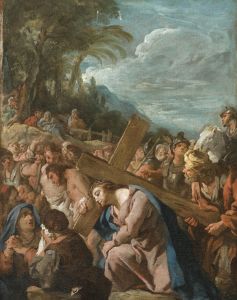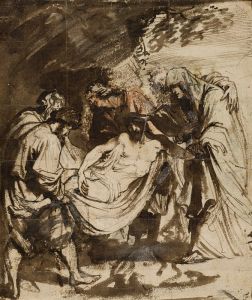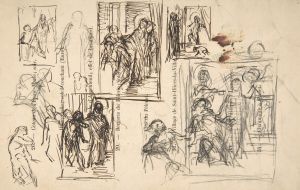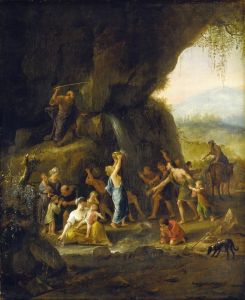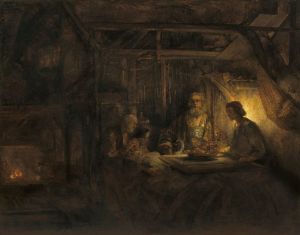
The Entombment
A hand-painted replica of Rembrandt van Rijn’s masterpiece The Entombment, meticulously crafted by professional artists to capture the true essence of the original. Each piece is created with museum-quality canvas and rare mineral pigments, carefully painted by experienced artists with delicate brushstrokes and rich, layered colors to perfectly recreate the texture of the original artwork. Unlike machine-printed reproductions, this hand-painted version brings the painting to life, infused with the artist’s emotions and skill in every stroke. Whether for personal collection or home decoration, it instantly elevates the artistic atmosphere of any space.
"The Entombment" is a painting by the renowned Dutch artist Rembrandt van Rijn, who is widely celebrated for his contributions to the Baroque movement and his masterful use of light and shadow. Rembrandt's works often depict biblical scenes, and "The Entombment" is no exception, as it illustrates the poignant moment following the crucifixion of Jesus Christ when his body is laid to rest in the tomb.
This painting is part of a series of works that Rembrandt created based on the Passion of Christ, which includes other notable pieces such as "The Descent from the Cross" and "The Resurrection." These works were commissioned by Frederick Henry, Prince of Orange, and are considered significant examples of Rembrandt's religious art.
"The Entombment" captures the somber and reflective mood of the scene with a dramatic use of chiaroscuro, a technique that Rembrandt mastered and is known for. This method involves the stark contrast between light and dark, which Rembrandt uses to focus the viewer's attention on the central figures and to convey the emotional gravity of the moment. The light in the painting often highlights the faces and hands of the figures, drawing attention to their expressions and gestures, which convey a sense of mourning and reverence.
In the composition, the body of Christ is depicted being lowered into the tomb by a group of figures, including Joseph of Arimathea, who, according to the Gospels, provided the tomb for Jesus' burial. The figures are arranged in a way that guides the viewer's eye through the scene, emphasizing the collective effort and the solemnity of the act. The expressions of the figures are rendered with great sensitivity, capturing the sorrow and devotion of those present.
Rembrandt's ability to convey deep emotion and narrative through his paintings is evident in "The Entombment." His attention to detail, from the textures of the fabrics to the nuanced expressions of the figures, adds to the overall impact of the work. The painting reflects Rembrandt's interest in human emotion and his skill in portraying complex psychological states.
The exact date of the painting's creation is not definitively known, but it is generally believed to have been completed in the 1630s, during a period when Rembrandt was particularly focused on religious themes. This was a time when he was gaining recognition for his innovative approach to traditional subjects and his ability to infuse them with a sense of immediacy and realism.
"The Entombment" is housed in the Alte Pinakothek in Munich, Germany, where it is part of a significant collection of European paintings. The work continues to be studied and admired for its artistic and historical significance, as well as for its powerful depiction of a key moment in Christian theology.
Overall, "The Entombment" exemplifies Rembrandt's mastery of composition, his innovative use of light and shadow, and his profound ability to convey the emotional depth of his subjects, making it a lasting testament to his genius as an artist.





